Apple has announced its new M1 Ultra chip, which provides double the performance of the already supremely powerful M1 Max chip. M1 Ultra features up to 20 CPU cores, 64 GPU cores, and 128GB unified memory, and is made of 114 billion transistors, which is the first for any desktop computer chip.
The new chip uses an innovative packaging architecture that interconnects two dies of M1 Max chips to create a single system on a chip. Apple’s breakthrough die-to-die custom interconnect technology called UltraFusion connects the two chips, making them act as a single chip. Appearing as a single chip makes the M1 Ultra behave as a single chip, which allows apps to utilize the increased performance without any changes to the code, which is usually the case with dual processors. Using this method, Apple is able to bypass issues like increased latency, reduced bandwidth, and increased power consumption that are related to dual-processor architectures.
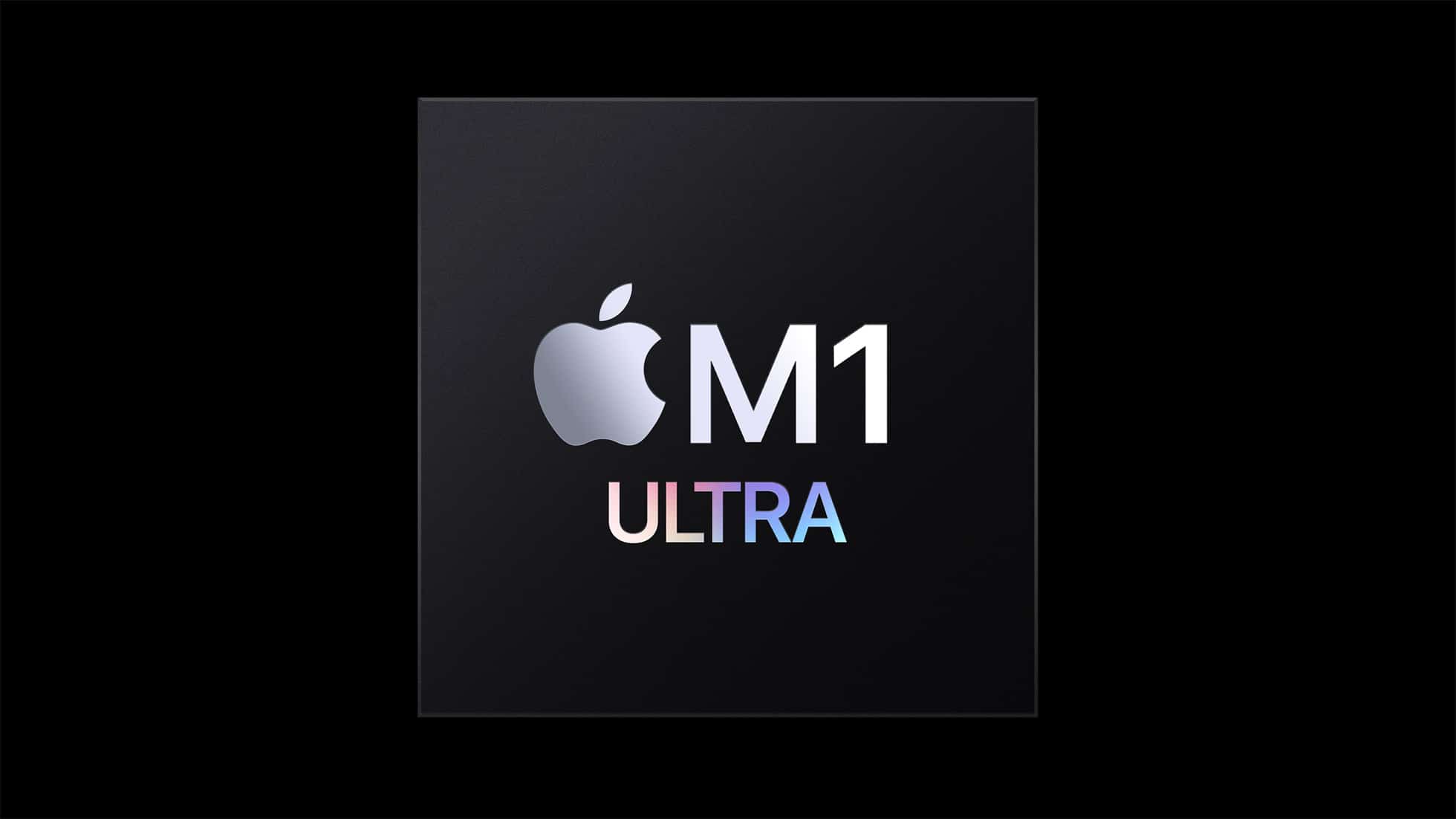
M1 Ultra – the fastest chip ever made for personal computers
The running theme with M1 Ultra is that it provides twice the performance of M1 Max for basically every task, whether it is CPU intensive, graphics-intensive, or machine learning. Here are the complete specifications as announced by Apple today:
- 114 billion transistors, built using 5nm process. The most transistors for any chip!
- Memory bandwidth: 800GB/s, more than 8 times of any PC desktop
- UltraFusion, custom interconnect technology, connects over 10k signals and 2.5TB/s bandwidth between the two dies. UltraFusion enables 4x the bandwidth of other leading interconnect technologies.
- 20-core CPU
- 16 high-performance cores
- Ultrawide execution architecture
- 192KB instruction cache
- 128KB data cache
- 48MB total L2 cache
- 4 efficiency cores
- Wide execution architecture
- 128KB execution cache
- 64KB data cache
- 8MB total L2 cache
- 16 high-performance cores
- 64-core GPU
- 8192 execution units
- Up to 196,608 concurrent threads
- 21 teraflops
- 660 gigatexels/second
- 330 gigapixels/second
- Supports up to 128GB unified memory
- Neural engine
- 32 cores
- 22 trillion operations per second
- Media engine
- Hardware-accelerated H.264, HEVC, ProRes, ProRes RAW
- 2 video decode engines
- 4 video encode engines
- 4 ProRes encode/decode engines
- Thunderbolt 4
- Secure Enclave
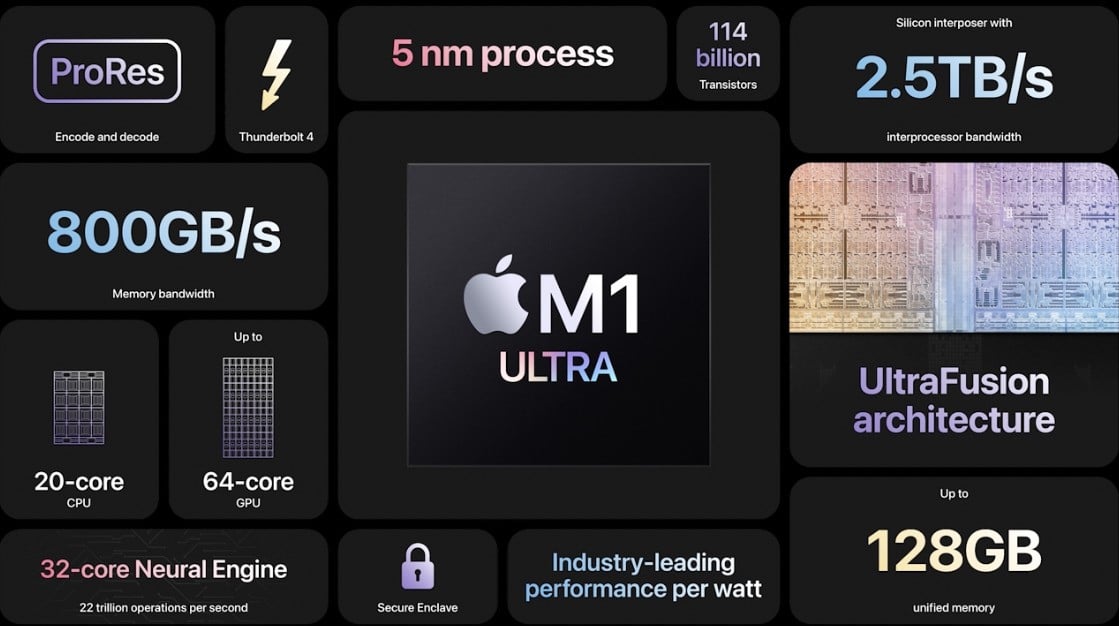
How fast is the M1 Ultra compared to Intel?
To show off M1 Ultra performance, Apple shared some graphs that pit M1 Ultra against Intel’s 12th generation chips as well as Nvidia’s 3090 GPU. As with all M-series chips, Apple highlighted the performance advantage while showcasing the power consumption compared to the competition.
Compared to a desktop powered by an Intel Core i9-12900K chip with DDR5 memory, the M1 Ultra provides 90% higher performance in the same power envelope.
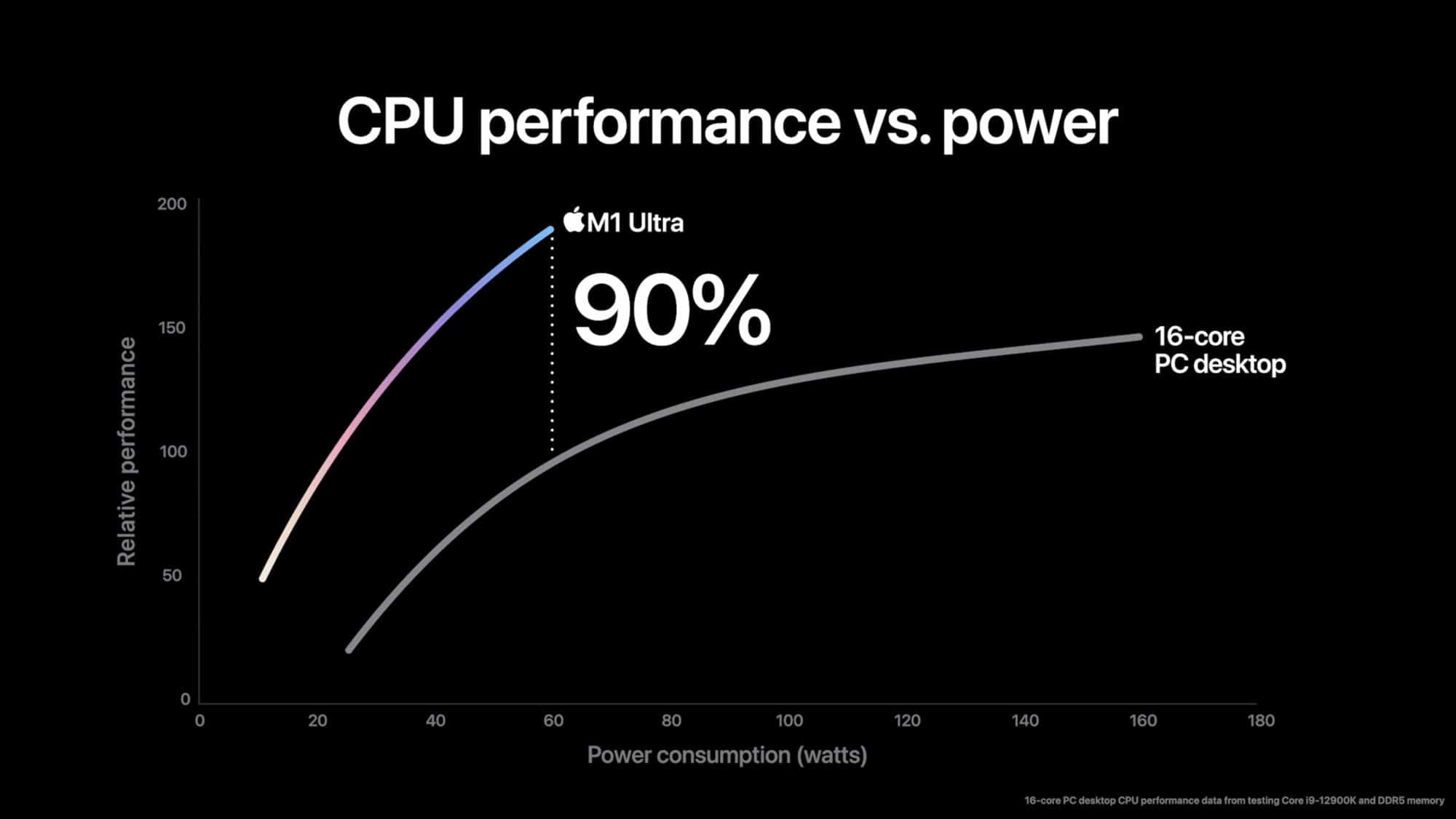
M1 Ultra can reach the same performance level as the Intel Core i9-12900K chip while using 100W less power.
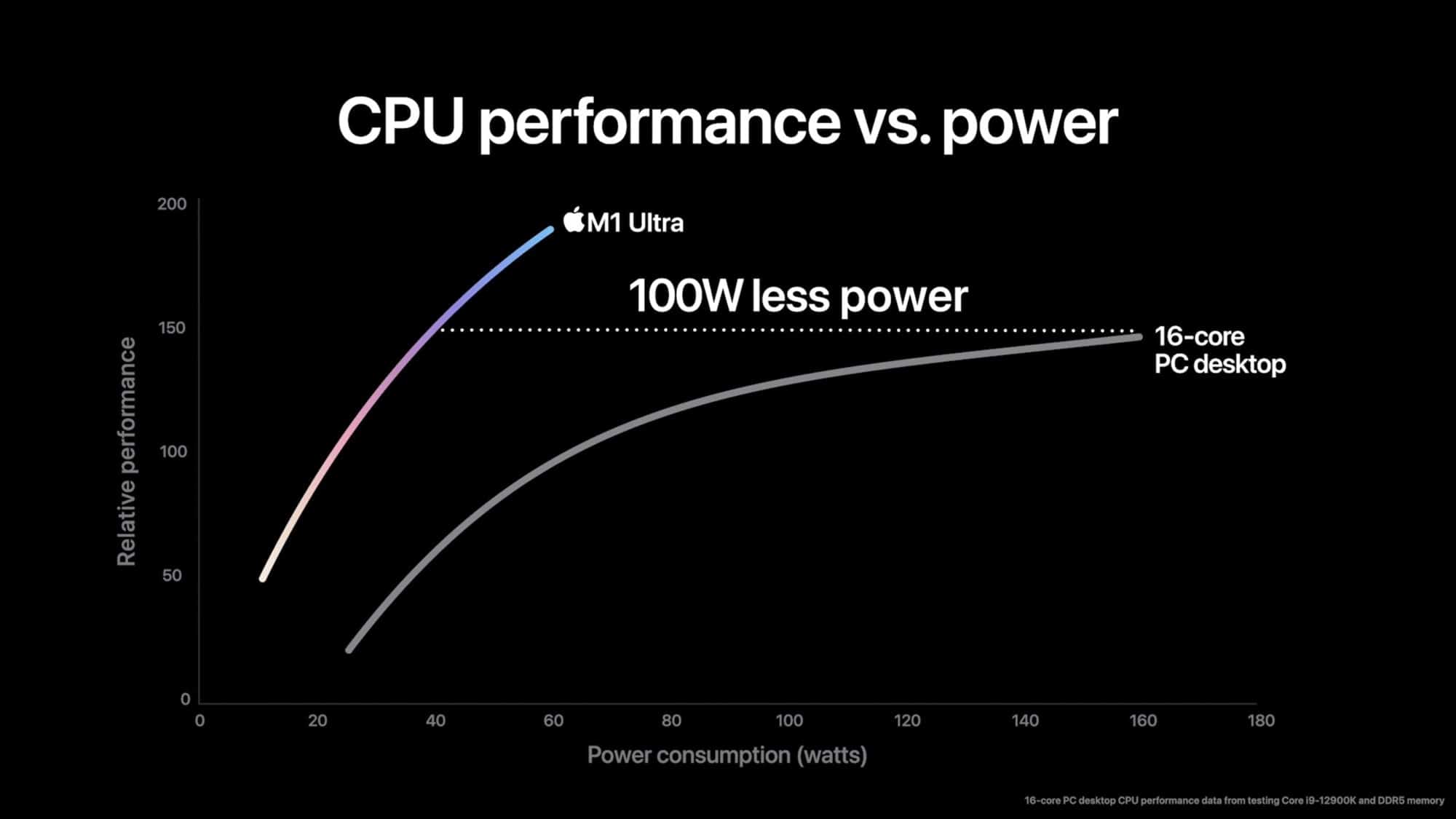
In terms of GPU performance, M1 Ultra outperforms Nvidia GeForce RTX 3090, the highest-end discrete GPU available, paired with the 16-core Intel Core i9-12900K chip, while using 200W less power, which is simply unheard of.
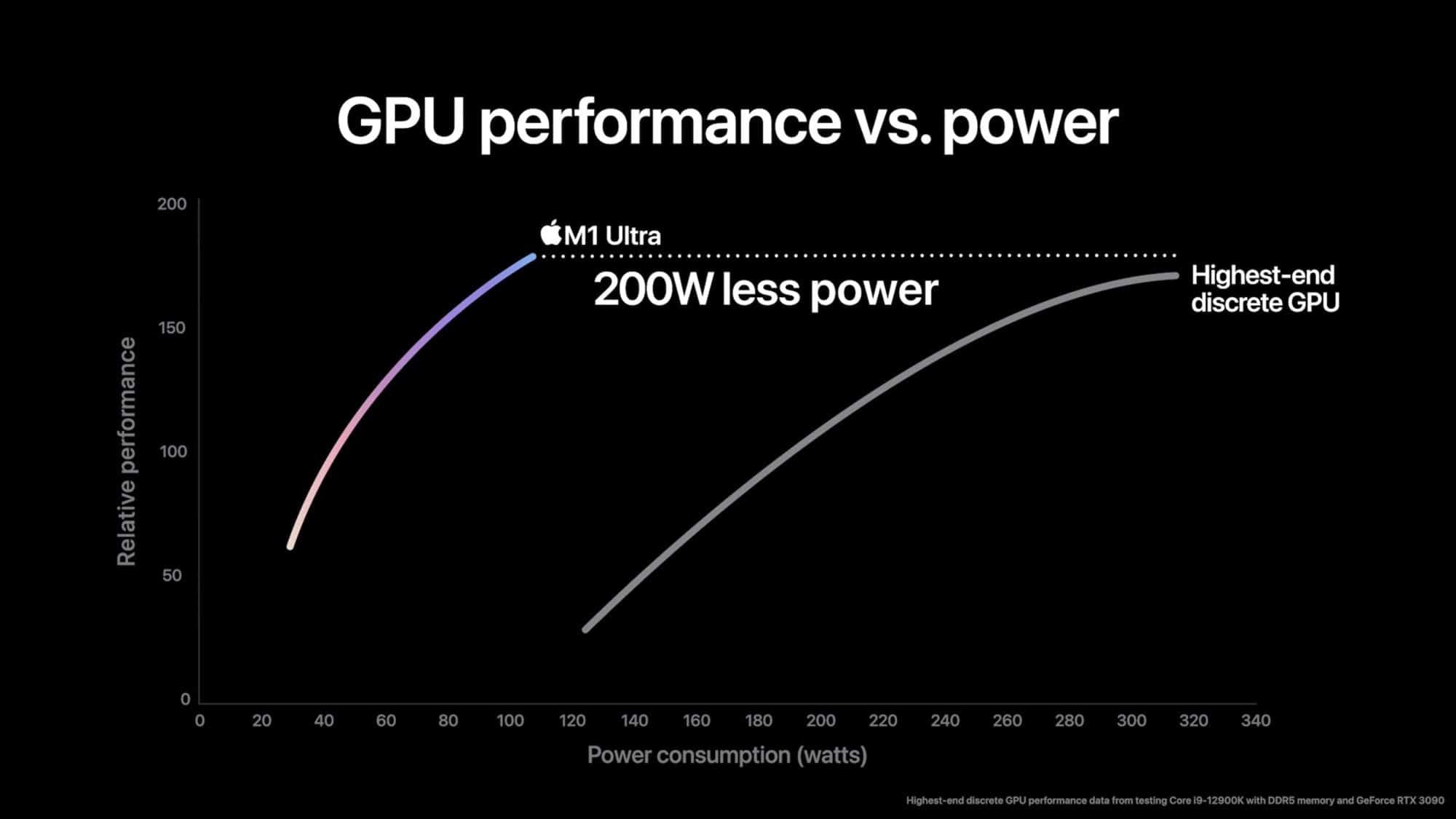
In other tidbits shared by Apple, the M1 Ultra is capable of the following performance feats:
- Playback of 18 streams of 8K ProRes 422 video – no other chip supports such performance
- Transcode video to ProRes up to 5.6x faster than a 28-core Mac Pro with Afterburner
- 3.8x faster PCU performance than a 27-inch iMac with a 10-core Intel Core i9 chip
- 60% faster CPU performance than a Mac Pro with a 28-core Intel Xeon chip
- 80% faster GPU performance than a Mac Pro with a Radeon Pro W6900X
- 4.5x faster GPU performance than a 27-inch iMac with a Radeon Pro 5700XT
The M1 Ultra will be available starting with the Mac Studio, which Apple also announced during the event today. The company hinted towards an updated Mac Pro, however, it is anyone’s guess as to whether it will feature an M1 Ultra chip, or a variant with four M1 Max chips.

